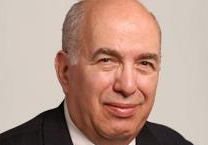Value Investing In Practice: A Conversation About Oaktree Capital
Our recent presentation on Oaktree (OAK) has generated significant interest from friends and investors, and so we’d like to address a few follow-up questions we’ve received and add some more color to our original analysis. Because Howard Marks, CFA, is an active member of CFA Institute, I thought it was quite fitting to do so through a conversation with Inside Investing.
CFA Institute: If we strip out 2013 incentive fees from your valuation, the company is now trading at close to intrinsic value. What needs to happen to generate $2.83 per share in incentive income in 2013? Has Oaktree given a sense of where it thinks those returns will come from?
Christopher R. Pavese, CFA: Before we detail our thinking on 2013 specifically, let’s step back and review the “value of carry,” to which the market assigns little value today. Marks recently elaborated on this subject at a Goldman Sachs Financial Services conference. His main points:
- OAK recognizes and receives carry only after LPs (limited partners) have received their capital back and met their preferred return. This point is called “crossover.” To date, $2.1 billion of gross carry ($1.3 billion net of compensation expense) has already been accrued on OAK’s books (roughly $8.50 per share). Note that we discount this figure in our valuation to account for the uncertainty of future conditions, liquidity, etc., but one could argue that it is a fairly firm value (more below).
- Roughly $5.00 per share of accrued carry is from Opps VIIb alone. As of 30 September 2012, OAK would have had to distribute approximately $12.3 billion to reach crossover. Last month, it reached $11.1 billion distributed, leaving $1.2 billion plus subsequent preferred return accruals to be distributed to reach crossover. We expect OAK to reach crossover on Opps VIIb in 2013, likely representing a significant jump in distributions to investors and a catalyst for shares. Importantly, much of the taxable income related to this carry has already been recognized. The best shelter for increasing tax rates is for them to have been prepaid.
Marks went on to explain the high-quality nature of OAK’s carry, which is one of many reasons we prefer the stock to its more cyclical asset management peers:
- OAK’s risk of clawback is negligible because the company recognizes and receives carry only after LPs have received their capital plus a preferred return. This is a much more conservative position than that of most private equity peers, providing us with much greater comfort in our estimates of value.
- Because the assets that underlie the accumulated carry are more likely to be debt than equity, they are less subject to a drastic loss of value. Furthermore, OAK’s debt is more likely to be senior than subordinated, and so we believe our capital is well protected from difficult markets.
- Impressively, OAK did not have negative incentive income even in 2008. To date, all of its 47 closed-end funds that were more than a year old had positive gross IRRs (internal rates of return) since inception and 35 were above the 8% net preferred return hurdle required to earn carry. OAK has earned incentive income every year for the last 15 years and every quarter for the last 35 quarters.
That being said, investors should understand that we are living in a different world today from the one when those returns were generated. With interest rates pegged at the zero bound, it will certainly be more challenging for OAK to deliver the 19% annual return it has historically averaged on closed-end funds. Clearly, Marks recognizes this challenge because he has told clients that OAK is targeting the lowest returns it has ever sought. “In the distressed strategies, like distressed debt and real estate, we’re aiming to make 15% gross. The irony is of course that today 15% sounds like some Herculean task. It’s the lowest yield we’ve ever targeted.” We think they are in the ballpark. OAK’s latest flagship fund, which began investing in 2009, had a 13.6% gross IRR through last quarter, whereas predecessors of the pool have returned as much as 35%, per the firm’s filings.
Still, using even more conservative return assumptions than OAK’s already reduced hurdles, we have projected our incentive numbers forward for the next several years. For example, we assume just a 10.5% return on closed-end funds, and so anything closer to “normal” would represent a significant upside to our valuation. Although we based our estimate of intrinsic value on 2013 numbers for purposes of this presentation, we typically look ahead three to five years when thinking about this type of investment. So, our 2013 numbers are really just a function of longer-term expectations and not necessarily indicative of specific point estimates. In any given year, incentive income will vary considerably with market conditions, but we believe it is more reliable than the market gives it credit, for reasons discussed earlier. What’s important here is to take a longer-term perspective in valuing the smoothed future incentive income. And although we may be living in a “different world” with regard to the current interest rate environment, in many ways the more things change, the more they stay the same. OAK is a natural beneficiary of macroeconomic uncertainty and market price volatility, two factors that should remain a tailwind for the firm’s strategies and present plenty of opportunities to generate future returns.
How should we approach valuing this company when one of its large assets (its stake in DoubleLine) is difficult to assess. How do you think about that asset as part of the overall picture? Is the company easier to value without it?
One of the intriguing aspects of our investment in OAK is that you don’t have to pin a precise value on the DoubleLine stake to achieve a comfortable margin of safety, although the investment certainly has greater value than most recognize. In fact, most of the Street models we’ve seen largely ignore the stake, and so this is something of a “hidden” asset. We approach the current investment in DoubleLine in two ways:
- The first is to value the firm on the basis of a percentage of AUM (assets under management) because fixed-income firms have traditionally exchanged hands for anywhere between 1% and 2% of assets. DoubleLine recently surpassed $50 billion, and Jeff Gundlach, DoubleLine’s founder, has commented that $100 billion is the likely cap. The firm is growing at a tremendous rate, with great success in its market segments. If we value OAK’s stake at 1% to 2% of its potential AUM, it is worth $1.50 to $3.00 per share — in effect, a nice cushion for us and a great investment for OAK, but not something that will determine the ultimate success of our investment in OAK, even on the high side of our estimates.
- Another method is simply to value OAK’s earnings from its investment in DoubleLine. In the last nine months, OAK has attributed investment income of $16.3 million to DoubleLine. This amount represents growth from a base of $629,000 in the previous nine months. Given this growth trajectory, we think annualizing the most recent quarterly earnings is a better reflection of value than the nine-month figure. OAK generated income of $7.2 million from the DoubleLine stake in the third quarter. Annualizing this figure brings us to $28.8 million of pretax earnings. Putting a 10×–15× multiple on this estimate results in a value of roughly $2 to $3 per share, in line with our AUM-based appraisal.
Can you unpack your thinking process in looking at OAK versus other large asset managers with more diversified product bases?
One of my favorite quotes from Seth Klarman’s Margin of Safety is, “Diversification for its own sake is not sensible.” In his 2006 Letter to Investors (emphasis added), Klarman expanded on this notion:
The idea that you should own a little bit of everything is a concept rooted in market efficiency. If the markets are efficient, you cannot outperform anyway, so by owning a bit of everything in just the right proportions, you stand to reduce portfolio volatility, while at least avoiding underperformance. This is the best that you can hope to do in an efficient market. For any fundamental-based investor, this is complete hogwash. Investment comes in the following varieties: undervalued, fairly valued, and overvalued. Price is everything, and every investment is undervalued at one price, fairly valued at a higher price, and overvalued at some still higher price. You buy the first, avoid the second, and sell the third. Having a goal of diversification, rather than owning value, causes investors to take their eye off the ball. It is a refuge of investment wimps, owning a little bit of everything to avoid being wrong, but thereby ensuring never being really right either.
Warren Buffett shared a similar philosophy in his 1965 Letter to Investors (emphasis added):
We diversify substantially less than most investment operations. We might invest up to 40% of our net worth in a single security under conditions coupling an extremely high probability that our facts and reasoning are correct with a very low probability that anything could drastically change the underlying value of the investment. We are obviously following a policy regarding diversification which differs markedly from that of practically all public investment operations. Frankly, there is nothing I would like better than to have 50 different investment opportunities, all of which have a mathematical expectation of achieving performance surpassing the Dow by, say, fifteen percentage points per annum. If the fifty individual expectations were not correlated, I could put 2% of our capital into each one and sit back with a very high degree of certainty that our overall results would be very close to such a fifteen percentage point advantage. It doesn’t work that way.
We have to work extremely hard to find just a very few attractive investment situations. Among the few we do find, the expectations vary substantially. . . . There is one thing of which I can assure you. If good performance of the fund is even a minor objective, any portfolio encompassing one hundred stocks is not being operated logically. The addition of the one hundredth stock simply can’t reduce the potential variance in portfolio performance sufficiently to compensate for the negative effect its inclusion has on the overall portfolio expectation. Anyone owning such numbers of securities after presumably studying their investment merit is following what I call the Noah School of Investing — two of everything. Such investors should be piloting arks. While Noah may have been acting in accord with certain time-tested biological principles, the investors have left the track regarding mathematical principles.
The optimum portfolio depends on the various expectations of choices available and the degree of variance in performance which is tolerable. The greater the number of selections, the less will be the average year-to-year variation in actual versus expected results. Also, the lower will be the expected results, assuming different choices have different expectations of performance. I am willing to give up quite a bit in terms of leveling of year-to-year results in order to achieve better overall long-term performance. Simply stated, this means I am willing to concentrate quite heavily in what I believe to be the best investment opportunities, recognizing very well that this may cause an occasional very sour year — one somewhat more sour, probably, than if I had diversified more. While this means our results will bounce around more, I think it also means that our long-term margin of superiority should be greater.
Interestingly enough, the literature of investment management is virtually devoid of material relative to deductive calculation of optimal diversification. All texts counsel “adequate” diversification, but the ones who quantify “adequate” virtually never explain how they arrive at their conclusion. Hence, for our summation on over-diversification, we turn to that eminent academician Billy Rose, who says, “You’ve got a harem of seventy girls; you don’t get to know any of them very well.”
Interestingly enough, the literature of investment management is virtually devoid of material relative to deductive calculation of optimal diversification. All texts counsel “adequate” diversification, but the ones who quantify “adequate” virtually never explain how they arrive at their conclusion. Hence, for our summation on over-diversification, we turn to that eminent academician Billy Rose, who says, “You’ve got a harem of seventy girls; you don’t get to know any of them very well.”
We follow a similar school of thought that starts with portfolio construction and flows through to the underlying businesses we seek to invest in. OAK is our single largest position in managed equity accounts today — we are willing to concentrate heavily in what we believe to be the best investment opportunities. We prefer businesses that operate in niche markets where competitive advantages are durable and dominant. OAK’s results may be more volatile than those of a broadly diversified asset manager, but the firm’s “long-term margin of superiority should be greater,” as Buffett might suggest.
Much of the appeal of OAK is its intense focus on core competencies as opposed to the shotgun approach to diversification pursued by other large asset managers. At OAK, growth has come from extending its niche at the edges. The company has raised roughly $10 billion annually for six years in a row by aggressively raising capital when opportunities present themselves. The industry is growing, OAK has plenty of potential for market share growth within existing markets, and new strategies and regions represent relatively unexploited expansion opportunities. All of this makes Oaktree a compelling investment opportunity that, we would argue, warrants a premium valuation to that of its peers.
If you liked this post, don’t forget to subscribe to Inside Investing via Email or RSS.



What about the tax structure? Seems really complex. There appears to be a real risk of rule changes on carried interest. What does that do to income?